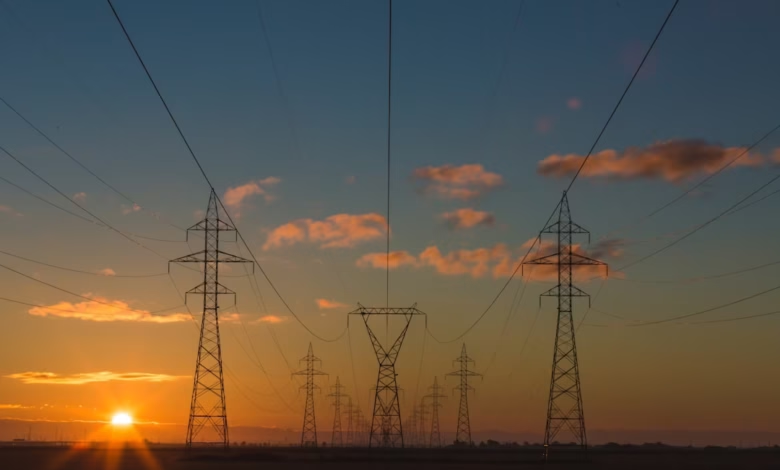Revolutionizing Energy Storage: Innovations in Batteries and Supercapacitors for a Sustainable Future

As the world grapples with the urgent need to transition from fossil fuels to more sustainable energy sources, advancements in energy storage technologies have taken center stage. Energy storage serves as a crucial component in the quest for renewable energy solutions, enabling the efficient utilization of solar power, wind energy, and hydropower while enhancing energy efficiency across various sectors. Innovations in batteries, supercapacitors, and other storage technologies are not only reshaping the landscape of energy markets but also influencing energy policy and investment strategies globally. In this article, we will explore the future of energy storage, examining how these advancements are driving the energy transition and bolstering energy security. We will delve into the impact of these technologies on smart grids and their pivotal role in mitigating climate change, all while considering the economic implications of this evolving energy landscape. Join us as we uncover the latest trends in energy R&D and the potential of distributed energy systems to transform our approach to energy transportation and utilization in a rapidly changing world.
- 1. The Future of Energy Storage: Innovations in Batteries and Supercapacitors for Renewable Energy Solutions
- 2. Energy Transition Strategies: How Advanced Storage Technologies Impact Energy Markets and Policy
- 3. Enhancing Energy Efficiency: The Role of Energy Storage in Smart Grids and Climate Change Mitigation
1. The Future of Energy Storage: Innovations in Batteries and Supercapacitors for Renewable Energy Solutions
As the global energy landscape continues to evolve, the future of energy storage is becoming increasingly pivotal in the advancement of renewable energy solutions. Innovations in batteries and supercapacitors are driving this change, significantly impacting how we harness, store, and utilize energy from sources like solar power and wind energy. These technologies are not just enhancing energy efficiency; they are also facilitating a smoother transition away from fossil fuels and towards a more sustainable energy portfolio.
Batteries, particularly lithium-ion and next-generation solid-state batteries, are at the forefront of this innovation wave. With improvements in energy density and charging speeds, these batteries are becoming more suitable for a variety of applications, including electric vehicles (EVs) and grid storage solutions. As energy markets expand and the demand for energy storage grows, investments in energy R&D are crucial to developing batteries that are both cost-effective and environmentally friendly.
Supercapacitors, on the other hand, offer unique benefits in energy storage, particularly for applications requiring rapid charge and discharge cycles. Their ability to deliver high power density makes them an ideal complement to batteries, especially in situations where quick bursts of energy are needed, such as in smart grids and energy transportation systems. This synergy between batteries and supercapacitors could enhance overall energy security and reliability in our electricity networks.
Moreover, as the world shifts towards a decarbonized future, the integration of energy storage solutions in renewable energy systems becomes essential. Technologies like carbon capture and hydrogen energy storage are emerging as viable options within the energy transition framework. By addressing the intermittency challenges associated with renewable resources, these innovations enable a more stable and resilient energy supply, ultimately contributing to global energy trends aimed at reducing greenhouse gas emissions and combating climate change.
As countries invest in offshore energy and hydropower, the need for robust energy storage solutions remains a priority in the energy policy agenda. Distributed energy systems that incorporate these innovations can enhance energy efficiency while also supporting the larger goal of energy exports and imports, thereby contributing to the overall energy economics of nations.
In summary, the future of energy storage, characterized by advancements in batteries and supercapacitors, plays an integral role in shaping the renewable energy landscape. By fostering innovations that support energy transition and resilience, we can achieve a greener, more sustainable future that prioritizes energy security and efficiency while addressing the pressing challenges posed by climate change.
2. Energy Transition Strategies: How Advanced Storage Technologies Impact Energy Markets and Policy
The global energy landscape is undergoing a significant transformation as countries strive to transition from fossil fuels to renewable energy sources. Advanced energy storage technologies, including batteries, supercapacitors, and other innovative solutions, play a pivotal role in this energy transition. By enhancing energy efficiency and enabling the integration of intermittent renewable sources such as solar power and wind energy into the grid, these technologies are reshaping energy markets and influencing energy policy.
One of the most crucial impacts of advanced energy storage is its ability to stabilize energy supply amidst the fluctuations of renewable energy generation. For instance, during peak solar or wind energy production, excess energy can be stored and later dispatched when demand surges. This capability enhances energy security and reliability, making renewables a more viable alternative to traditional fossil fuels. As a result, energy markets are witnessing a shift where investments in energy storage are becoming as significant as those in renewable energy projects.
Moreover, the integration of smart grids with advanced storage solutions facilitates better management of energy transportation and distribution. These smart grids allow for real-time data analysis, optimizing energy flow, and improving overall energy efficiency. As countries adopt policies promoting distributed energy systems, such as community solar or localized wind farms, energy storage becomes essential in ensuring that energy is available when and where it is needed most.
Energy policy is also adapting to these advancements. Governments are increasingly recognizing the importance of energy storage in achieving climate change goals and meeting global energy trends. Incentives for energy storage technologies, along with carbon capture initiatives and support for hydrogen energy development, are becoming more common. This shift not only bolsters the growth of green energy but also encourages energy exports and enhances energy imports of cleaner technologies.
Investment in energy R&D is crucial for further advancements in energy storage technologies. As innovations continue to emerge, they will not only impact energy efficiency but will also redefine energy economics. The transition towards low-carbon technologies, including thermal energy and hydropower, is supported by robust energy storage solutions, ensuring that the movement towards a sustainable energy future is both economically viable and environmentally responsible.
In conclusion, advanced energy storage technologies are integral to the energy transition, influencing energy markets and shaping energy policy. By enabling the effective utilization of renewable energy sources and enhancing energy security, these technologies are paving the way for a more sustainable and resilient energy landscape.
3. Enhancing Energy Efficiency: The Role of Energy Storage in Smart Grids and Climate Change Mitigation
Energy storage plays a crucial role in enhancing energy efficiency, particularly within the context of smart grids and climate change mitigation. As the world shifts toward a more sustainable energy landscape, characterized by an increasing reliance on renewable energy sources such as solar power and wind energy, the importance of effective energy storage solutions becomes paramount. These technologies not only help balance supply and demand but also enhance the reliability of energy markets.
Smart grids utilize advanced energy storage systems to optimize energy distribution. By storing excess energy generated during periods of high production—such as sunny or windy days—these systems can release energy when demand peaks, thereby reducing reliance on fossil fuels and improving overall energy efficiency. This dynamic approach to energy management is vital for integrating distributed energy resources, such as residential solar installations and electric vehicles, into the grid.
Moreover, energy storage technologies contribute significantly to climate change mitigation efforts. By facilitating the transition from fossil fuels to green energy, energy storage helps reduce greenhouse gas emissions. For instance, thermal energy storage allows for the capture and use of excess heat from renewable sources or even from nuclear energy, further diversifying energy portfolios. Innovations in hydrogen energy and bioenergy also benefit from energy storage, enabling more effective utilization of these resources.
The global energy transition requires robust energy policies and investments in energy R&D to foster advancements in energy storage technologies. Policies that promote energy innovations and support the development of carbon capture and energy efficiency initiatives will be crucial in securing energy markets against fluctuations in energy imports and exports.
In summary, enhancing energy efficiency through energy storage is essential for achieving energy security and sustainability. As we continue to explore advancements in energy storage—whether through batteries, supercapacitors, or other technologies—the impact on climate change mitigation and the overall energy ecosystem will be profound. By aligning energy investments with global energy trends, we can pave the way for a resilient and sustainable energy future.
In conclusion, the advancements in energy storage technologies, including batteries, supercapacitors, and other innovative solutions, are crucial for the ongoing energy transition towards renewable energy sources. These technologies not only provide a pathway to enhance energy efficiency but also play a significant role in ensuring energy security amidst fluctuating energy markets dominated by fossil fuels and nuclear energy. As global energy trends shift towards greener alternatives, the integration of energy storage systems into smart grids will facilitate the optimization of energy distribution, making renewable sources like solar power, wind energy, and hydropower more reliable.
Furthermore, as nations invest in energy R&D, the potential for breakthroughs in energy storage will pave the way for a more sustainable energy economy, driving down carbon emissions and supporting climate change mitigation efforts. The intersection of energy storage with emerging sectors such as electric vehicles and hydrogen energy illustrates the vast opportunities for innovation and economic growth. As policymakers respond to these advancements, the alignment of energy policy with these technologies will be essential for fostering a resilient energy landscape that prioritizes energy exports and imports while addressing the challenges posed by climate change. By embracing these advancements in energy storage, we can create a more efficient, secure, and sustainable energy future for generations to come.
References:
(Include relevant sources in APA format)





